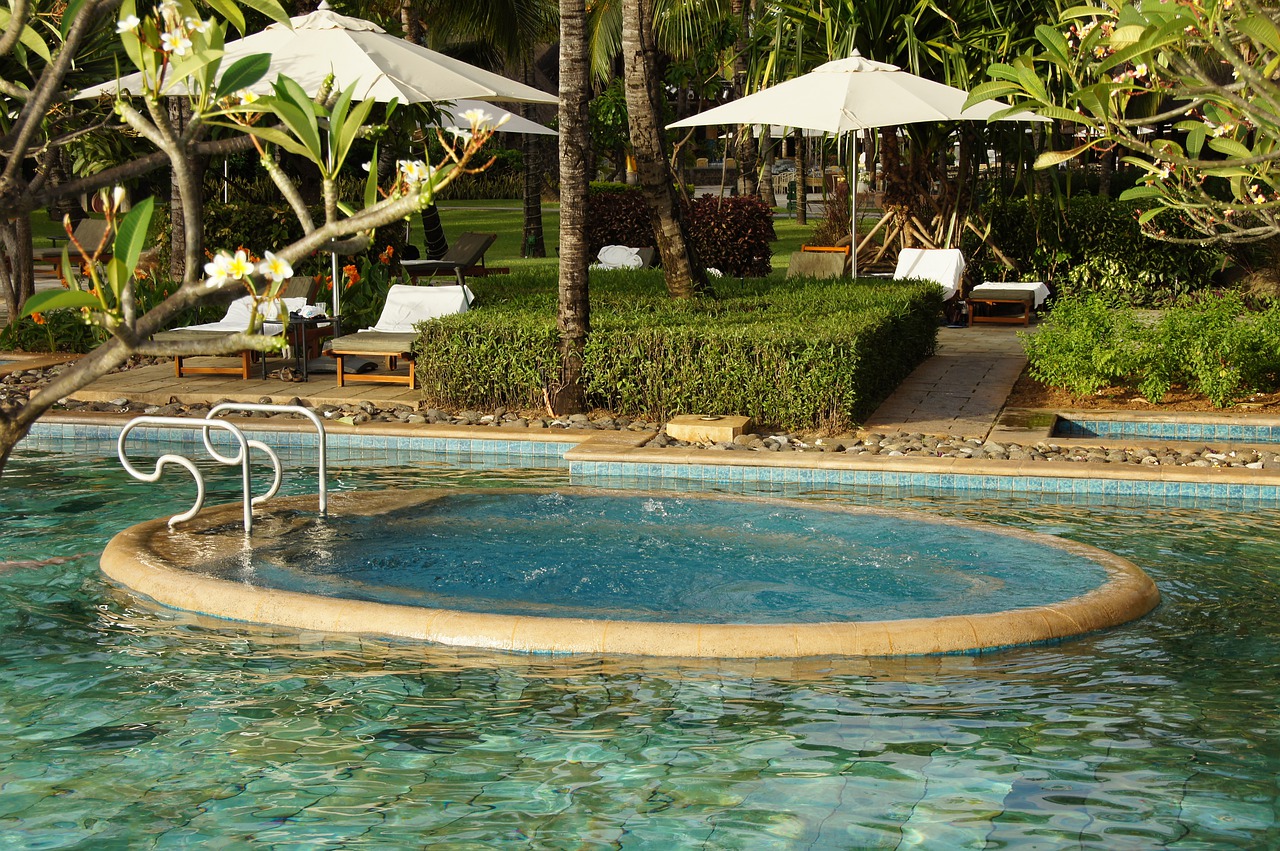
Your hot tub may be a heaven-send for your spirit and your sore muscles, but it can be tough on your utility bills. Whether you have a permanent installation or a portable hot tub, keeping your power consumption down can be done by small degrees.
Keep Things Clean
Use a cover to keep debris out of your pool. Trim back trees and plantings that may lead to organic debris in your tub while you're enjoying the water. Set up a spot to clean the feet of everyone getting in the tub to reduce the risk of sand building up in the bottom of your tub and grinding away at the material of the tub base.
Make sure that you regularly check the quality of your water, particularly the calcium or other hard water products that can build up on pumps, seals, and the surface of your hot tub. Keep an eye on the pH every day to reduce the risk that you'll have to drain the tub and refill it because the water got slimy, nasty, or loaded with algae.
Set up a regular schedule for checking on your filters in addition to checking on your water pH, hard water risk, and your chemical levels. The cleansing chemicals in your hot tub water can go too far and damage your skin. They may even damage the walls of your hot tub, or damage the seals and soft parts of the pumps and filtration system.
Small adjustments in the chemical content of your water will protect your tub walls, the filters, the pump components, and your skin. Any time you have to shock your hot tub, you may be shortening the life of your tub.
Keep an Eye on Water Temperature
The owner's manual of your selection from the softub spa collection will tell you the minimum water temperature you should maintain. Using the lowest temperature, you can reduce the hours that your heater runs. If your cover is black and your tub gets direct sunlight, you can also build up solar heat.
Additionally, consider using a timer if you use your hot tub at the same time each day. Keep things on the lowest temperature setting during the day, then bump up the heat at the same time each day so the hot tub is ready for you after dinner, before bed, or first thing in the morning.
Make sure that you also have a regular time each day to test your water. If you need to adjust the chemical mix, you want that to be fully filtered and integrated before your regularly scheduled soak. Testing the water won't take more than twenty seconds, and only five seconds of that is actually labor; once your water has been tested, you need to wait fifteen seconds for the test strip to display your results.
Test, adjust, re-cover the tub, and leave it to cycle on the lowest advised temperature setting unless you're ready to turn up the heat and enjoy a nice soak.
Don't Buy Used
Energy efficiency is a constant area of improvement in the appliances of every room of your house. Your new refrigerator will take less electricity; your new hot tub will also be much more efficient.
New hot tubs have more efficient motors. Additionally, the seals are almost guaranteed to be in better shape, so the water movement will be much more efficient and less likely to leak. Filling up your hot tub only to see water dribble out the motor port is a waste of resources.
A new hot tub will also have much better insulation. Whether your tub is fiberglass or foam, heating the great outdoors by heating and circulating water inside your tub is extremely inefficient. Retro-fitting insulation into your old hot tub will be difficult if not impossible; no matter how you pierce the exterior, you put the interior tub structure at risk and you may even pierce it. Buying a new tub will reduce this risk.
Invest in a new tub and take exceptionally good care of it for the best results. Your hot tub will last longer and the risk of leakage and water waste will be less. Your pumps will last longer if the filters are checked regularly and if the water quality is altered in small steps.
You may also like
3 Ways to Ensure Your Home is Eco-Friendly
Top Tips for Buying an Eco-Friendly Mattress That’s Supportive, Comfortable and Green
Sustainable Trends For Interior Design
Great Sustainable Materials For Your New Home Design
